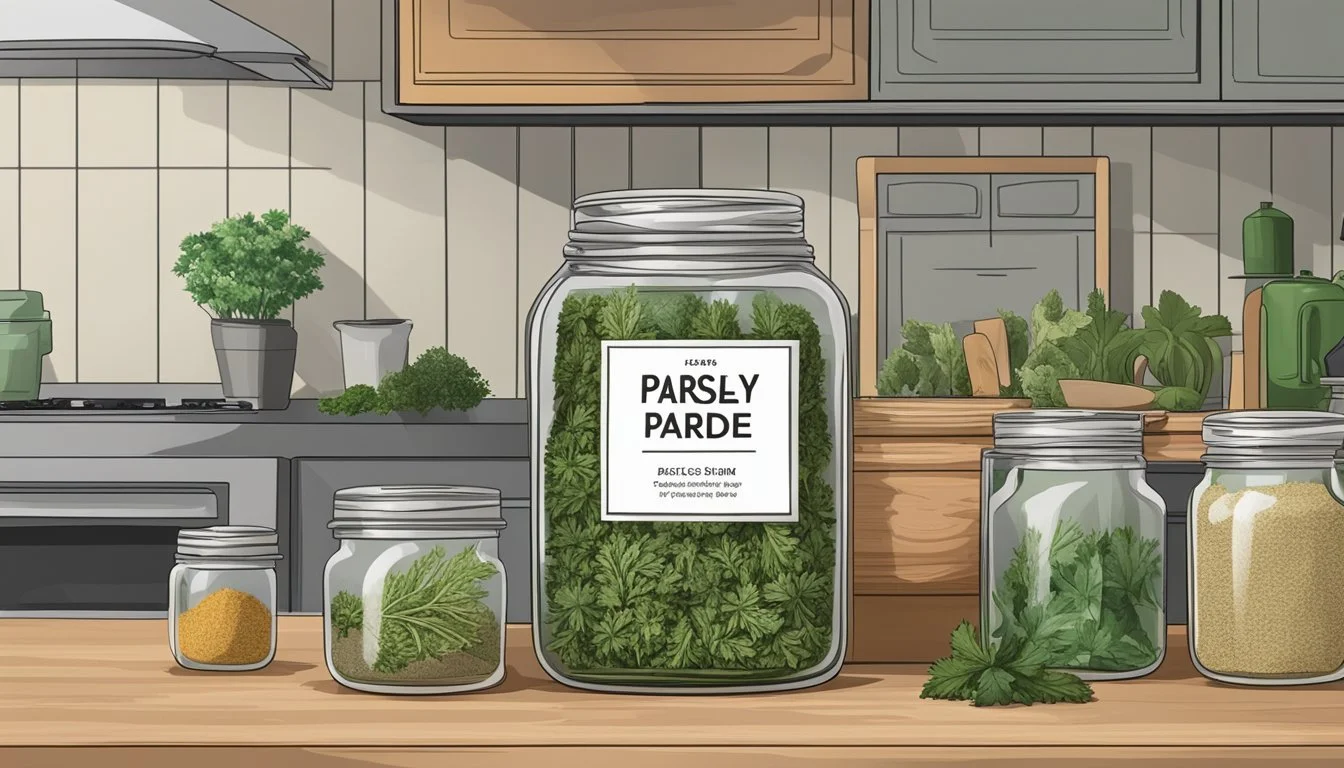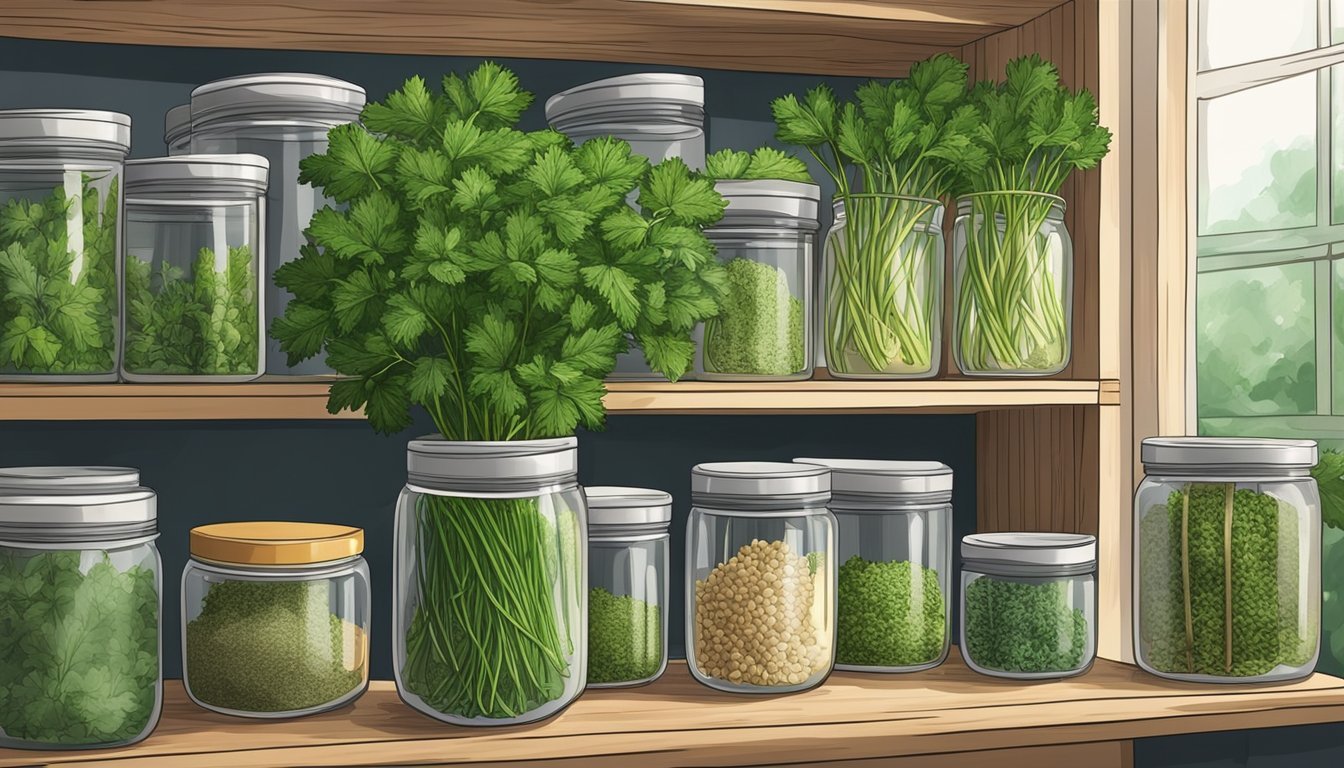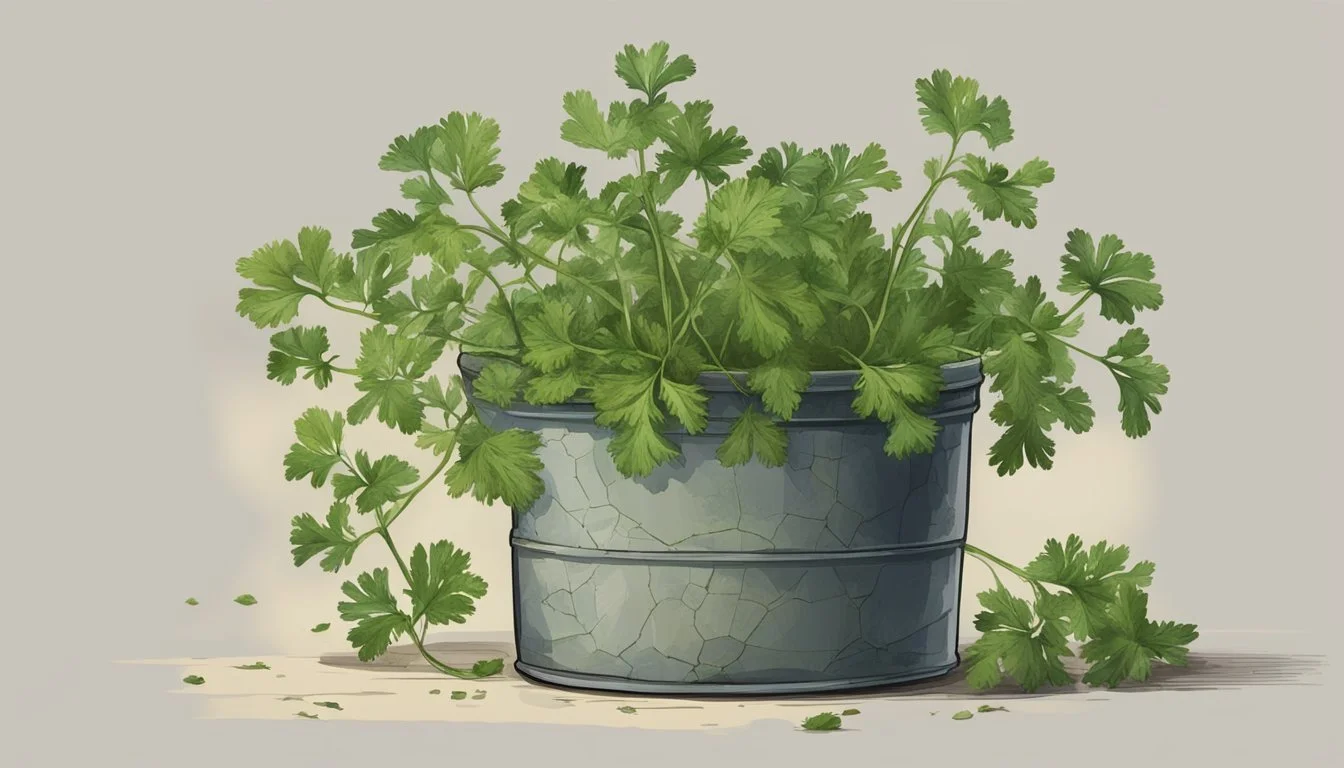How Long Does Dried Parsley Last?
Shelf Life and Storage Tips
Dried parsley is a staple in spice cabinets around the world, known for its convenient longevity compared to its fresh counterpart. When stored under appropriate conditions, dried parsley flakes typically retain their best quality for about 1 to 3 years. The key to maximizing the shelf life of dried parsley lies in how it is stored; a cool, dry place away from direct sunlight and heat which can lead to quicker degradation of flavor and potency.
While the freshness of dried parsley can last up to three years, this can vary based on storage methods and the environment. Using airtight containers with tight-fitting lids is recommended to help preserve the aromatic qualities and flavors of dried parsley. Even after the expiration date, dried parsley may still be safe to consume, but its flavor profile could diminish, making it less effective in culinary uses.
Consumers often wonder about the longevity and effectiveness of dried parsley in their cooking. It's important to note that while it can remain safe for consumption past its prime, the impact of dried parsley in recipes depends greatly on its preservation. Regular checks for color, smell, and flavor can help determine whether the dried herb still holds its desirable culinary properties.
Benefits of Using Dried Parsley
When considering the use of dried parsley, there are notable advantages to its inclusion in a culinary repertoire. Despite the drying process, parsley retains a degree of its vibrant, slightly peppery flavor, essential for enhancing the taste profile of numerous dishes. Furthermore, its aroma contributes to the overall sensory experience of a meal.
Nutritionally, dried parsley maintains a host of benefits. It is a good source of vitamins A and C, both of which are known for supporting the immune system and skin health. Additionally, it contains antioxidants which play a role in protecting the body from free radical damage.
In terms of practical kitchen use, dried parsley offers convenience. Unlike fresh parsley, which can wilt rapidly, its dried counterpart has a significantly longer shelf life, making it a reliable pantry staple. Once properly stored in an airtight container, away from moisture and light, it can last for about 1 to 3 years while still delivering its characteristic flavor to dishes.
Nutrient Benefit Vitamins A & C Immune support, skin health Antioxidants Protect cells from damage
Incorporating dried parsley into meals ensures that dishes are imbued with both flavor and nutritional value, showcasing its dual role as both seasoning and a source of dietary benefits.
Harvesting and Drying Fresh Parsley
When drying parsley, the process begins with proper harvesting, washing, and selecting a drying method. Ensuring parsley is thoroughly dried will contribute to its longevity.
Methods for Drying Parsley
There are several effective methods for drying parsley. Oven drying involves placing washed and dried parsley leaves on a baking sheet and heating at a low temperature until completely dry. Another method is air drying, where parsley bunches are hung in a well-ventilated area until they have no remaining moisture.
Preparing Parsley for Drying
Before drying parsley, one should wash the leaves to remove dirt, then pat them dry. Parsley should be harvested when it has ample foliage, typically 70-90 days of growth, and stems with three segments of leaves are best for drying.
Ideal Conditions for Drying Parsley
For parsley to dry effectively, it must be placed in a dark, warm, and well-ventilated area. The drying process can take anywhere from 7 to 15 days, depending on the chosen method and environmental conditions. It's important to check the parsley regularly and ensure it is completely dry before storage.
Proper Storage for Dried Parsley
To maintain the quality and extend the shelf life of dried parsley, one must consider the type of containers used for storage as well as the environmental factors that can affect its potency.
Choosing Containers for Storage
Airtight containers are essential for storing dried parsley. They must have tight-fitting lids to prevent exposure to air, which can diminish the herb's flavor and aroma over time. Glass jars, such as mason jars, are ideal because they do not harbor odors and are easy to seal tightly. When using plastic containers, one should ensure they are food-safe and have a seal that prevents moisture from entering.
Recommended container options:
Glass jars with screw tops
Airtight plastic containers with secure lids
Environmental Factors Affecting Storage
Storage environments must be cool, dry, and dark to sustain the quality of dried parsley. Exposure to light, heat, and humidity can accelerate the degradation of the herb, leading to a loss of flavor and potential spoilage. Thus, it is critical to store containers in a pantry or cupboard away from direct sunlight and away from heat sources such as stoves or appliances.
Ideal storage conditions:
Temperature: cool (not exceeding room temperature)
Humidity: low (avoid damp or moist areas)
Light: minimal (a dark pantry or cupboard is preferred)
Shelf Life of Dried Parsley
When stored correctly in suitable containers and under optimal conditions, dried parsley can have a shelf life of up to three years. However, it is most potent within the first year of storage. One should periodically check the herb for signs of loss of color or scent, which indicate that its flavor may be deteriorating.
Expected shelf life: Up to 3 years, best within 1 year
Signs of aging: Fading color, diminished aroma
By adhering to these specific guidelines for choosing appropriate containers and mindful about the storage environment, one can effectively preserve the integrity and extend the shelf life of their dried parsley.
Signs of Degradation in Dried Parsley
When assessing the quality of dried parsley, it's crucial to watch for changes in physical properties and test for loss of flavor potency. These indicators signal a decline in the herb's quality and usefulness.
Changes in Color and Aroma
Dried parsley typically has a vibrant green hue, especially when it's fresh or relatively new. A faded or brownish color indicates that the parsley may be past its prime. Color should be seen as a primary signal of parsley's condition. Alongside visual cues, one should also note the aroma. Fresh dried parsley should emit a distinct grassy and slightly peppery scent. When the herb loses potency, its aroma fades, suggesting a decrease in flavor strength.
Testing for Potency Loss
To test the potency of dried parsley, one can perform a simple taste test. A small pinch of the herb should be enough to gauge whether there is a pronounced flavor or if it has become bland and stale. Additionally, feeling the texture of the parsley can help determine its state. If the leaves clump together, moisture may have compromised the parsley, leading to potential mold growth and further loss of potency.
In cases where consumers opt to dry parsley in the oven for home preservation, ensuring a complete dehydration is key to longevity. Should the dried parsley not be sufficiently dehydrated, it's more susceptible to moisture-related spoilage. Conversely, properly dried parsley should retain its structure and crumble when pinched if still potent and not expired.
Using Dried Parsley in Cooking
Incorporating dried parsley into cooking ensures that dishes retain a touch of freshness and flavor. Dried parsley flakes serve as a handy substitute for the fresh herb and work well in a variety of dishes, from garnishes to soups.
How to Maximize Flavor
To ensure the best taste from dried parsley, storage is critical. It should be kept in an airtight container and placed in a cool, dry area, away from direct sunlight. This method helps preserve its flavor and extend its shelf life—typically up to two years. Adding dried parsley early in the cooking process gives it time to hydrate and infuse the dish with its aromatic qualities.
Recipes and Substitutions
Dishes that commonly benefit from the addition of dried parsley include:
Salads: A sprinkle of dried parsley can enhance the flavor without overwhelming other ingredients.
Soups: It contributes a subtle herbaceous note.
Garnish: Although less visually appealing than fresh, it can still add a pop of color and flavor.
Parsley tea: For a warm, soothing drink, dried parsley flakes can be steeped in hot water.
In recipes where parsley's fresh flavor is paramount, substituting dried parsley may slightly alter the taste profile, as it is generally milder than fresh. A good rule of thumb is to use one teaspoon of dried parsley to replace one tablespoon of fresh parsley. This ensures that the essential flavor of the food is preserved, and the dish maintains its intended taste.
Frequently Asked Questions About Dried Parsley
When it comes to dried parsley, consumers often have questions regarding its shelf life and how to discern its quality. This section addresses those concerns, providing essential guidance to ensure the parsley used in cooking maintains its best quality for flavor and aroma.
How to Tell if Dried Parsley is Still Good
Color and Smell: One should inspect the color of the dried parsley; it should retain a somewhat vibrant green hue. A significant loss of color, turning to a dull, faded green indicates a decline in quality. Additionally, if the dried parsley no longer emits its characteristic aroma or has a stale scent, it may have expired.
Texture: Dried parsley should not be moist or clumpy. These traits could suggest exposure to moisture and potential spoilage.
How Often Should Dried Parsley Be Replaced
Timeframe: For optimal taste, it's advisable to replace dried parsley every one to two years. Over time, dried herbs lose their potency, and replacing them periodically ensures the best quality in cooking.
Storage Conditions: The shelf life of dried parsley can be extended by storing it in a cool, dark place away from direct sunlight and heat. Proper storage conditions help to preserve the herb’s flavor and prevent early spoilage.
By following these guidelines, one can ensure that their dried parsley remains a flavorful addition to their culinary creations.
Comparing Dried Parsley to Other Herbs
In assessing dried parsley's longevity, it is essential to compare it to fresh parsley and other herbs, as shelf-life can vary significantly based on form and type.
Dried Parsley vs. Fresh Parsley
Dried parsley offers a longer shelf life compared to its fresh counterpart, which typically lasts about two weeks in the refrigerator. The drying process removes moisture, which helps prevent bacterial growth and reduces the herbs' susceptibility to spoilage. While fresh parsley features a bright, more potent flavor and is often used for garnish, dried parsley can last for one to three years if stored properly in a cool, dark, and dry place.
Dried Parsley and Similar Herbs
When considering dried parsley alongside other dried herbs like oregano, basil, mint, and cilantro (how long does cilantro last?), they share similar storage and shelf-life qualities. Here are key comparisons:
Oregano: This herb is robust and retains its flavors well when dried. Generally, it can last even longer than parsley, up to four years.
Basil: Similar to parsley, dried basil has a decent shelf life but can lose its potency after a year.
Mint: Dried mint can last up to three years, similar to dried parsley, with proper storage.
Cilantro: Often more delicate, dried cilantro can lose flavor quickly and is best used within a year for optimal taste.
Care for dried herbs involves keeping them away from heat sources, light, and moisture to maximize their shelf life. Because dried herbs can lose flavor over time, they should be checked periodically for color and aroma to ensure they retain the desired culinary properties.







